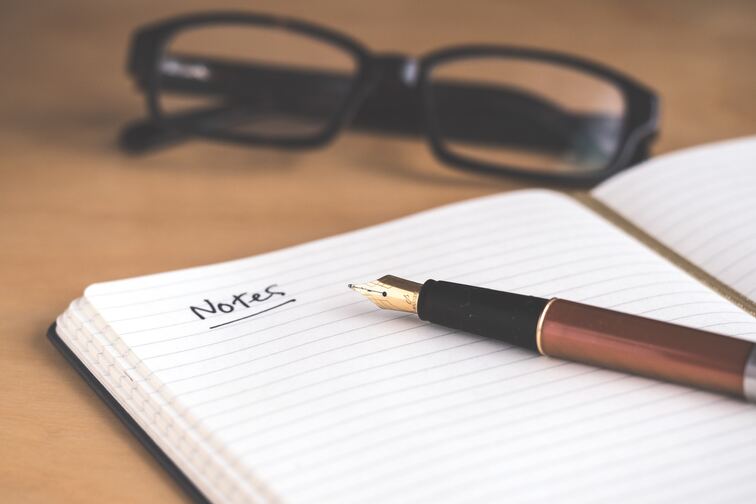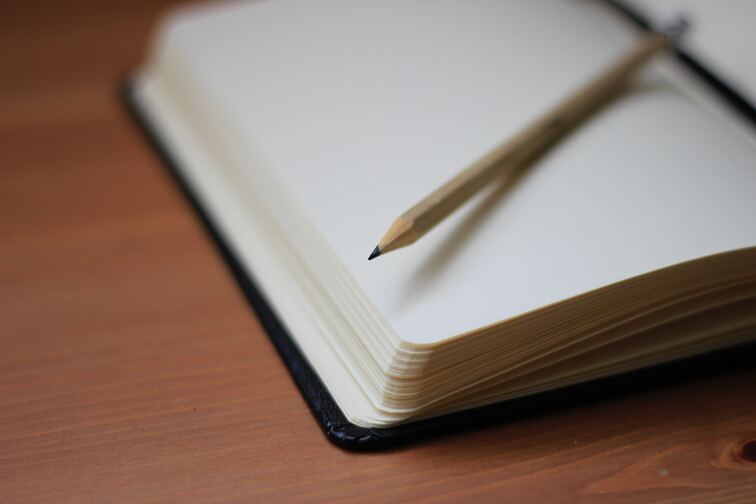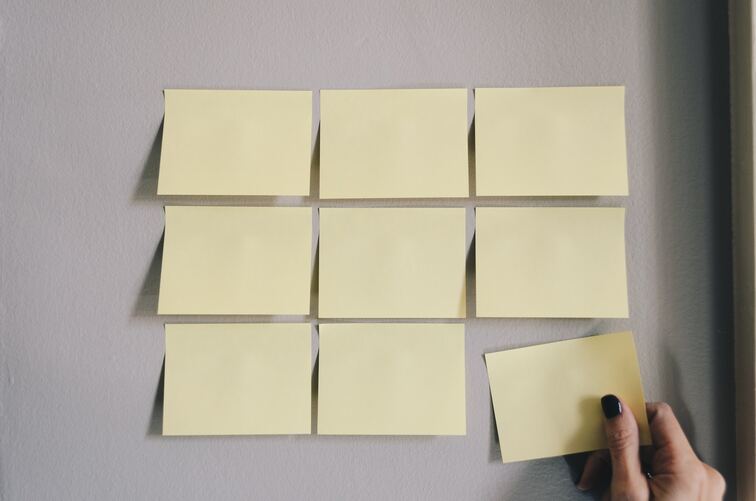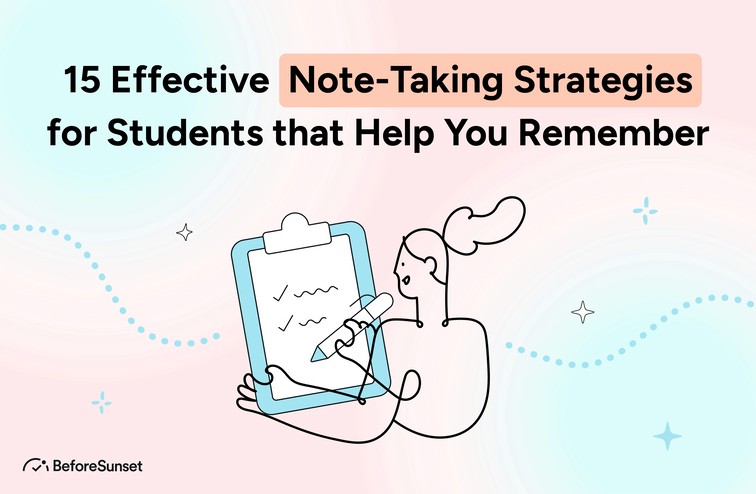A key ability that is essential to a student's academic achievement is taking notes effectively. It's important to remember and recall knowledge when it counts, not only to take notes. We outline 15 efficient note-taking techniques in this blog that are intended to improve students' ability to recall and retain knowledge.
The Cornell Method, concept mapping, summarizing, visualization, and many more approaches are included in these methodologies. Each technique is explored in depth, demonstrating how it improves memory retention and providing helpful advice on how to put it into practice.
Students may create a unique note-taking strategy that fits their learning style, improves memory recall, and promotes their overall academic achievement by investigating and putting these tried-and-true tactics to use. These techniques will enable you to take insightful notes that keep in your memory and contribute to your long-term academic achievement, whether you're studying for tests, doing research, or going over course materials.

Why Taking Notes is Important?
Because it improves memory retention and active engagement with material, taking notes is crucial. Notes encourage learning and improve recall by jotting down important details and summarizing topics. They assist make sense of the subject matter by giving complicated information structure and organization.
Reviewing notes improves comprehension and is a useful study tool. Personalized reference material, notes represent individual perception and help people communicate and work together. Additionally, by assessing and analyzing material, taking notes encourages critical thinking. In general, taking notes is a valuable tool for understanding, learning, and efficient knowledge management.

What to Consider When Choosing Note-Taking Strategies
The correct note-taking techniques must be used in order to acquire and retain information effectively. With so many choices, it's important to think about a number of things that fit your particular learning preferences, the nature of the material, and the intended use of your notes.
The appropriate note-taking technique may greatly improve your ability to comprehend, arrange, and retain information. This article discusses important factors to bear in mind when choosing note-taking techniques, offering insights that will guide your choices and help you set up your note-taking procedures for optimal efficiency.
By being aware of these factors, you may adjust how you take notes and maximize their effectiveness as a learning tool.
1. Strategy: Timing
Timing must be taken into account while selecting note-taking techniques. Real-time note-taking entails jotting down details as they are delivered, which calls for speedy analysis and synthesis. This approach is helpful while actively participating in material, such as during meetings or lectures.
To organize and organise notes in real-time, many people use techniques like the Cornell Method, outlining, or thought mapping. Post-event note-taking, on the other hand, is going over and summarizing material after the first meeting. This method enables introspection and a greater comprehension of the subject matter.
Post-event learning techniques are the best for evaluating, studying, and retaining information. You may choose the best technique to fit the situation and your goals for taking notes by taking into account the time of your note-taking requirements.
2. Strategy: Formality
When deciding on note-taking techniques, formality is crucial since it may affect the degree of depth and order in your notes. The formality should be appropriate for the situation and goal of your notes. In general, it is advised to retain an organized and comprehensive approach in circumstances that are more formal, such as academic lectures or professional meetings.
Key ideas, supporting facts, and a formal framework can be effectively captured using techniques like the Cornell Method or outlining. In contrast, you may have more freedom to use acronyms, symbols, or informal language that matches your style and preferences while taking notes informally or for personal use.
Changing the formality of your note-taking can assist to make sure that your notes are understandable, succinct, and suitable for the purpose for which they are meant.
3. Strategy: Organization
When choosing note-taking techniques, organization is an important aspect to take into account. Notes that are arranged well make it easier to understand, evaluate, and retrieve information. The technique you choose should offer a simple framework that makes it possible for you to organize and link concepts efficiently.
The Cornell Method, mind mapping, and other organizational techniques help you capture the primary concepts, subtopics, supporting information, and their connections. To decide which organizing strategy is ideal for you, think about your own learning preferences and the subject matter.
Additionally, you may further improve the arrangement of your notes by utilizing headers, bullet points, numbering, or color-coding. Making organization a top priority will help you build a logical and consistent framework that will improve understanding and turn your notes into a useful resource for future reference.
4. Strategy: Cues
Cues are essential to efficient note-taking techniques. Cues serve as reminders or triggers to aid with memory and recall. By using cues in your note-taking procedure, you establish links between the material you have written down and the actual signals.
These can be context-related signals related to the setting or context in which the information was received, verbal cues such as keywords or phrases, or visual clues such as symbols or diagrams. By giving mental triggers that aid in recalling certain information or concepts, cues help you to improve memory retrieval.
Actively interact with the signals as you go through your notes to check your comprehension and solidify the links in your memory. Your capacity to remember and recall information may be greatly enhanced by the use of cues, which will increase the effectiveness and efficiency of your note-taking.
5. Strategy: Content
When selecting note-taking techniques, the topic itself is an important factor to take into account. To successfully record and arrange the material, different subjects or types of information may call for unique methods. For instance, complicated concepts and equations in scientific or technical fields may need for accurate note-taking techniques like the Cornell Method or outlining.
On the other hand, topics that focus on the arts or literature may benefit from more associative and visual methods, such as idea mapping or mind mapping. To choose the best note-taking approach, take into account the type of information, its level of complexity, and the level of detail needed.
The ability to catch the crucial details, emphasize important concepts, and keep your notes coherent results from tailoring your method to the particular subject, making note-taking more efficient and successful.

The 15 Most Effective Note Taking Strategies For Students
Taking notes is a crucial ability for students that may significantly improve their academic achievement and learning experience. It can be difficult to decide which note-taking techniques are the most efficient, though, because there are so many of them.
We outline the top 15 note-taking techniques for students in this post, providing a thorough manual to assist them improve their study habits. These tactics include more conventional ones like mind mapping and concept mapping as well as more avant-garde ones like the Cornell Method and outlines.
Each method is thoroughly detailed, including its advantages, ideal applications, and implementation advice. Students may take more thorough, organized, and successful notes that promote better understanding, retention, and academic achievement by investigating these tried-and-true note-taking techniques and identifying the methods that work best for their learning styles and subject areas.
1. Use an outline
Using an outline to take notes is a structured and organized approach that helps you capture key points, main ideas, and supporting details in a hierarchical format. Here's a step-by-step guide on how to use an outline to take notes:
Start with headings: Begin by creating main headings that represent the major topics or sections of the content you are studying or engaging with.
Subheadings: Under each main heading, add subheadings that break down the topic into more specific subtopics or subcategories.
Indentation: Use indentation or bullet points to further break down the information under each subheading. Indentation helps to visually represent the hierarchy of the information.
Key points and details: Within each subheading, jot down the key points or main ideas. Be concise and use short phrases or keywords to capture the essential information.
Supporting details: Add supporting details, examples, or explanations below each key point or main idea. These details provide context and further clarify the information.
Parallel structure: Maintain a parallel structure throughout the outline. Use consistent formatting and indentation for each level of headings and subheadings.
Review and refine: After the note-taking session, review your outline notes. Make sure the information is well-organized, coherent, and captures the important aspects of the content. Refine and reorganize if necessary.
Abbreviations and symbols: To save time and space, consider using abbreviations or symbols in your outline notes for commonly used terms or phrases. Just ensure they are easily understandable and don't hinder comprehension.
Personalize and adapt: Customize the outline format to suit your preferences and learning style. You can experiment with different bullet styles, numbering systems, or color-coding techniques to make your outline notes more visually appealing and engaging.
2. Write down important information
Using an outline to take notes provides a structured and organized approach.
Start with main headings representing major topics, followed by subheadings for specific subtopics.
Indentation or bullet points show the hierarchy and relationships between the information.
Jot down key points and main ideas concisely under each subheading.
Include supporting details, examples, or explanations beneath the key points.
Maintain a parallel structure throughout the outline for consistency.
Review and refine the outline notes for organization and clarity.
Consider using abbreviations or symbols for commonly used terms.
Personalize the outline format to suit your preferences and learning style.
3. Use Color Coding
Color coding is an effective way to improve and organize your notes visually. A visual hierarchy that promotes understanding and memory may be made by categorizing or assigning certain meanings to various hues. You may, for instance, choose one color for the major concepts, another for the supporting facts, and yet another for the instances or definitions.
Use these selected colors to underline or highlight pertinent text or diagram information while you take notes. Using this method, you may quickly identify important ideas and connections in your notes and examine them with ease. For further order and clarity, color coding can be used for headers, subheadings, or certain sections.
You may produce a visually appealing and organized collection of notes that support efficient learning and knowledge retention by introducing color into your note-taking process.
4. Make Quizzes
Making quizzes is a valuable strategy to test your understanding and reinforce the information captured in your notes. Here's how you can create quizzes based on your notes:
Identify key concepts: Review your notes and identify the key concepts, main ideas, and important details that you want to quiz yourself on.
Create question types: Generate a variety of question types, such as multiple choice, true or false, fill in the blanks, or short answer questions. Adapt the question format to match the nature of the content and the level of detail you want to assess.
Use cues as prompts: Utilize cues from your notes to formulate questions. Use keywords, phrases, or summaries as prompts to test your memory and understanding of the associated information.
Incorporate different levels of difficulty: Create questions that cover both basic and more complex aspects of the material. Include questions that assess factual knowledge as well as questions that require analysis, synthesis, or application of the information.
Organize and structure the quiz: Arrange the questions in a logical order or categorize them according to topics or subtopics. This helps ensure a coherent flow and facilitates targeted review of specific areas.
5. Take Audio Notes
Audio notes allow you to record an entire lecture, meeting, or conversation without the need for selective summarization. This ensures that you capture all the information presented, including nuances, tone, and context. With audio notes, you can fully concentrate on listening and engaging with the speaker or content in real-time, without the distraction of writing or typing. This promotes active listening and deeper understanding.
Audio notes eliminate the risk of misinterpretation or missing important details during rapid note-taking. You can always refer back to the recorded audio to verify information and ensure accuracy when reviewing. Audio notes can complement written or visual notes. You can use them to capture complex explanations, discussions, or ideas that may be difficult to capture in writing alone. Combining different note-taking methods provides a comprehensive and multi-modal approach to learning.
6. Use the Cornell Method
A well-liked and efficient note-taking technique is the Cornell Method, which encourages organization, active learning, and simple revision. To apply the Cornell Method, separate your note paper into three sections: a part at the bottom, a section in the right-hand column that is broader than the left.
Write down the major concepts, important details, and pertinent information as you read or listen to lectures in the right-hand column. Use brief words or bullet points to be succinct. Write any signals or phrases that will help you remember information when you go over your notes in the left-hand column.
These cues may take the form of inquiries, summaries, or key words. Write a succinct summary of the important topics in the bottom part, giving a quick rundown of the whole text. This approach makes it easier to actively participate, organize, and quickly check your notes, which makes it a useful tool for learning and understanding.
7. Follow the Teacher
A note-taking technique called "following the teacher" concentrates on jotting down important details and information from the instructor's presentation or lecture. Stay focused and involved during the lesson in order to properly follow the teacher. Pay close attention to the teacher's explanations, make a point of highlighting key ideas, and pay attention to any vocal clues they give.
Write down the essential concepts, illustrative details, and examples as they are delivered in brief, unambiguous notes. It's important to be selective and only jot down the most important details rather than attempting to remember everything. Any stress the teacher provides on a subject or an idea should be noted since it demonstrates how important it is.
Engage in active learning by raising queries and requesting clarification when necessary. Following the teacher enables you to concentrate on the most important information and precisely record it in your notes, allowing for an effective review and improved understanding of the material.
8. Use a Laptop or Tablet
In terms of ease, organization, and accessibility, taking notes on a laptop or tablet has several benefits. Taking notes on a laptop or tablet allows you to type rapidly and collect information in real-time without having to worry about readability or speed. It gives you the freedom to quickly rearrange, modify, and format your notes.
Additionally, many digital note-taking applications come with functions that make it easy to organize and access notes, like searchability, the addition of multimedia components, and cloud storage. The ability to exchange digital notes with others makes collaborative note-taking more feasible.
However, it's crucial to control any distractions that may be brought on by using a digital device and strike a balance between paying attention to the information and maintaining focus. Overall, taking notes on a laptop or tablet offers a practical and adaptable platform that may improve organization, accessibility, and efficiency throughout your learning process.
9. Keep Notes Concise
A helpful habit that fosters clarity, efficiency, and efficient study is keeping notes brief. When taking notes, try to be as concise as possible in capturing the primary points, core concepts, and important details. You may produce a shortened version that is simpler to study and understand by concentrating on the key ideas and leaving out unnecessary elements.
To effectively communicate information, use keywords, acronyms, or bullet points. Aim for conciseness without losing the consistency and substance of your notes. By using this method, you can take notes more quickly and examine and revise them more quickly.
Shorter notes also make it easier to remember key information and prevent information overload. You may simplify your study materials, make them easier to organize, and improve your capacity to understand and remember information by developing the skill of taking brief notes.
10. Use Headers and Subheadings
Organizing and organising material in your notes is made simple by using headers and subheadings. Headings and subheadings serve as signposts that direct you through the text and make it simple for you to find particular themes or parts. When taking notes, mark important concepts or subjects as headings.
Then, divide those key points into subtopics and assign them subheadings. This hierarchical layout makes it simpler to navigate inside your notes and offers a clear visual depiction of the links between various thoughts.
Quick review and revision are also made easier by headings and subheadings since you may rapidly search for pertinent material based on the headers. You may improve the coherence, readability, and accessibility of your notes by integrating headers and subheadings, which results in more efficient learning and memory retention.
11. Write Down Cues
A useful strategy to improve memory retrieval and promote efficient review is noting clues in your notes. Cues are reminders or suggestions that spark your memory and aid in recalling particular pieces of information. Consider potential indications that may help you later when taking notes.
Key phrases, questions, summaries, or visual clues like symbols or diagrams are some examples of these cues. You make links in your mind between the cues and the related facts by putting cues in your notes. The signals serve as triggers when you check your notes, making it simpler to locate and recall the pertinent information.
Cues also promote better knowledge and inspire participation in the subject matter. You may provide yourself useful memory aids that support efficient learning, retention, and recall of knowledge by purposefully inserting clues into your note-taking process.
12. Use Pictures and Diagrams
Including images and diagrams in your notes is a highly effective way to improve comprehension, visual representation, and memory retention. Visual aids stimulate your visual memory and speed up the processing of intricate ideas or connections.
When writing down ideas or procedures, think about using sketches, diagrams, flowcharts, or graphs. These images may make connections clearer, clarify ideas, and help people remember what they've learned. Images and diagrams can be used to clarify complicated material, offer a visual overview of important ideas, and act as visual cues for memory or revision.
Visuals can also aid in the formation of links between concepts and the promotion of a comprehensive comprehension of the subject. When you include images and diagrams in your note-taking, you produce a lively and visually appealing collection of notes that improve understanding and foster efficient learning.
13. Try Different Types of Paper
Examining various note-taking papers might provide special advantages and accommodate personal preferences. To choose which choice best meets your needs, think about testing with a few different ones. For instance, lined paper offers guidelines for writing orderly and clean notes, while grid paper can aid with diagramming and building organised layouts.
Paper with a dot grid gives you versatility when making written notes and graphic components. Graph paper may also be used to make accurate notations in mathematics or science. Specialty papers, such as waterproof or tear-resistant paper, can also be useful in particular settings or circumstances.
You may improve your note-taking experience, compliment your note-taking style, and increase the clarity and utility of your notes by experimenting with various types of paper.
14. Practice Taking Notes in Different Situations
A useful practice that improves adaptation and skill in properly collecting information is practicing note-taking in various contexts. You learn how to modify your note-taking strategy when you are exposed to various situations, such as lectures, meetings, presentations, or while reading different kinds of information.
Different strategies may be needed for each circumstance, such as paying close attention during lectures and summarizing the main points or actively engaging in debates and taking notes during meetings. The capacity to take effective notes, adjust to various information sources and delivery methods, and identify and prioritize important information all benefit from practice in many contexts.
It also enables you to pinpoint problem areas and learn which approaches are most effective in each situation. You may improve your note-taking skills, become a more adaptable learner, and become a more successful communicator by actively participating in note-taking in a variety of scenarios.
15. Follow a Self-Regulation Strategy
It is effective to use a self-regulation method when taking notes since it encourages concentration, planning, and metacognitive awareness. Setting objectives, tracking results, and making modifications are all parts of self-regulation that help you take better notes.
To put this method into practice, start by deciding on specific note-taking goals, such as jotting down significant points or summarizing main concepts. Throughout note-taking sessions, keep an eye on your progress by assessing your degree of involvement and the efficacy of your tactics.
Consider how well-organized and effective your notes are, and make any required corrections. Practice metacognitive awareness as well by periodically reading and evaluating your notes, identifying your strengths and places for improvement, and adjusting your strategy as necessary.
Using a self-regulation technique allows you to actively participate in your own learning, ensuring that your note-taking supports your objectives and improves your general understanding, retention, and academic performance.
How to Use Note Taking Strategies Effectively
To use note-taking strategies effectively, consider the following tips:
Prepare and preview: Before the lecture, meeting, or reading session, familiarize yourself with the topic. Previewing the material helps you anticipate key points and organize your thoughts in advance.
Actively engage: Stay attentive and actively participate in the learning process. Listen actively, ask questions, and seek clarification when needed. Actively engaging with the content enhances comprehension and helps you identify important information to capture in your notes.
Choose suitable strategies: Select note-taking strategies that align with your learning style, the nature of the content, and the context of the situation. Experiment with different methods like the Cornell Method, outlining, mind mapping, or others to find the ones that work best for you.
Be selective: Avoid trying to write down every single detail. Focus on capturing key ideas, main points, and supporting details. Summarize information in your own words and use concise phrases or keywords.
Organize and structure: Use headings, subheadings, bullet points, or visual aids to organize and structure your notes. Create a hierarchy that reflects the relationships between concepts, making it easier to review and review later.
Review and revise: Regularly review your notes to reinforce your understanding and consolidate your knowledge. Revise and clarify any unclear or incomplete information. Identify areas that need further exploration or additional research.
Customize and personalize: Adapt note-taking strategies to suit your preferences and needs. Incorporate elements like color coding, symbols, or abbreviations that enhance your organization and understanding of the material.
Practice and refine: Consistent practice is key to improving your note-taking skills. Continuously refine your approach based on your experiences and feedback. Be open to experimenting with new techniques and making adjustments as necessary.
Regularly revisit and utilize notes: Make a habit of revisiting and utilizing your notes for review, study, and application. Use them as study guides, reference materials, or aids for assignments and exams.
Where Does BeforeSunset Come Into Play?
At BeforeSunset, we believe that taking notes is essential for staying productive and organized. With our AI-powered productivity tools, it's now easier than ever to create schedules and meet deadlines. Plus, we are improving our tools every day so that you can keep doing more with less effort. Try BeforeSunset today and see how taking notes can become a breeze!

